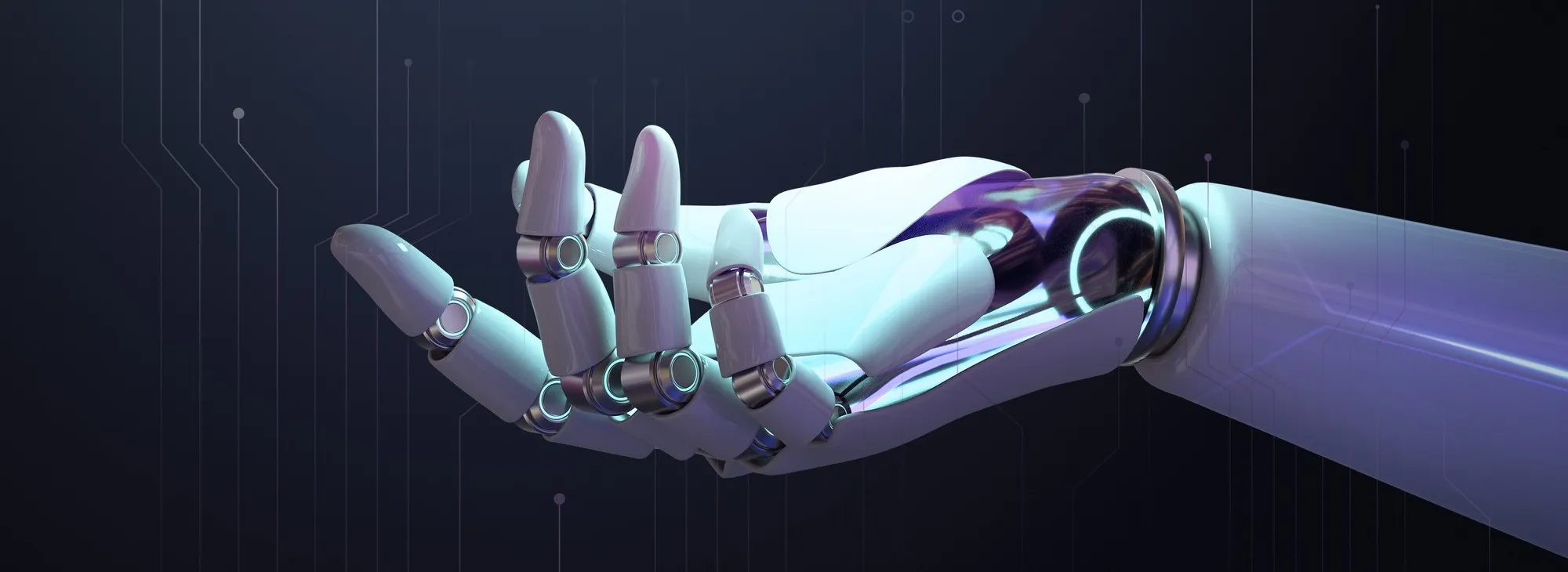SAY HELLO!
The Future of AI-Driven Workflows: Why Agentic Intelligence is the Next Big Leap

In a world where businesses are scaling faster than ever, traditional automation is reaching its limits. While automation has eliminated repetitive tasks, it still relies on rigid rules and predefined workflows. When conditions shift, these systems falter, requiring human intervention to make decisions, course-correct, or handle exceptions.
The next evolution in automation isn’t just about working faster—it’s about working smarter. Agentic AI is ushering in a new era of intelligent automation, where AI doesn’t just execute tasks but understands context, makes decisions, and adapts autonomously.
At Digivate Labs, we are leading this transformation with Agentic AI, paired with a structured execution engine called ISHAN—a proprietary low-code platform designed to orchestrate and execute AI-driven workflows with precision.
Why Traditional Automation is No Longer Enough
Most enterprise automation today follows a linear, rule-based approach. If a system encounters an unexpected scenario—such as a missing document in a claims process or a conflicting data point in a vendor evaluation—it either flags it for human review or, worse, breaks down entirely.
Agentic AI changes this. Unlike traditional automation, which blindly follows instructions, Agentic AI is designed to learn, reason, and act. It can:
- Analyze complex datasets and detect anomalies.
- Make contextual decisions without requiring predefined rules.
- Adapt dynamically based on new information.
But AI-driven decision-making alone is not enough. The real challenge is execution. That’s why we integrate ISHAN Workers—modular, structured execution engines that take AI-driven decisions and implement them seamlessly across enterprise systems.
Together, Agentic AI and ISHAN Workers create a system that is not only intelligent but also operationally efficient.
Understanding Agentic AI in Workflows
Agentic AI refers to AI systems that are capable of autonomously understanding, planning, and executing tasks within structured workflows. Unlike traditional automation, which follows rigid, rule-based scripts, Agentic AI adapts to new data, makes contextual decisions, and operates with a degree of self-governance. These systems use advanced machine learning models, decision trees, reinforcement learning, and knowledge graphs to optimize process flows.
Key Components of an Optimal Workflow:
-
AI Agents: Execute domain-specific tasks such as data extraction, fraud detection, anomaly identification, decision support, etc. They form the intelligence layer of the workflow.
-
ISHAN Workers: These modular and reusable task executors handle the granular, systematic execution of processes, integrating AI decisions into broader workflows. ISHAN workers ensure tasks are executed in a structured manner, maintaining workflow continuity, compliance, and efficiency.
Key Characteristics of Agentic AI and ISHAN Workers:

- Autonomy: Agents execute tasks within workflows with minimal supervision.
- Workflow Execution: ISHAN workers ensure AI-driven decisions are translated into actions within enterprise systems.
- Interoperability: Both agents and ISHAN workers interact with multiple systems and datasets, ensuring seamless integration.
- Scalability: ISHAN’s worker-based approach enables workflows to scale efficiently.
- Reusability: ISHAN workers can be repurposed across multiple workflows, improving efficiency and reducing redundancy.
Grounding in Organizational Knowledge
One of the critical aspects of Agentic AI is grounding, which ensures that AI-driven agents operate within the context of an organization’s best practices and proprietary knowledge. Rather than making isolated decisions, agents leverage company-specific data, policies, and historical insights to ensure their actions align with established business strategies. This prevents AI-driven workflows from deviating from compliance guidelines or introducing inconsistencies in decision-making. Key techniques used for grounding include:
- Contextual Data Access: Agents are equipped with access to internal databases, policy documents, and historical transactions to make informed decisions.
- Knowledge Embedding: AI models incorporate industry best practices and company-specific guidelines to ensure compliance and consistency.
- Feedback Mechanisms: Continuous learning loops ensure that AI agents refine their decision-making based on real-world outcomes and expert feedback.
By embedding grounding mechanisms, we ensure that our AI-driven workflows reflect organizational expertise, drive efficiency, and maintain trust in automation.
Agentic AI in Action: Our Use Case Examples

1. Automated Healthcare Claims Processing
Challenge: Healthcare insurers face inefficiencies due to a lack of visibility into claims processing, delays in approvals, and fraud risks. Traditional claims processing relies heavily on third-party administrators (TPAs), leading to opaque workflows, manual interventions, and increased processing costs. These inefficiencies impact both operational efficiency and policyholder satisfaction.
Our Solution: A streamlined AI-driven claims processing workflow that enables real-time claim tracking, automated eligibility verification, fraud detection, and intelligent decision support. The AI-driven decision-making is seamlessly executed by ISHAN’s structured workers, ensuring compliance and task orchestration.
Agentic AI and ISHAN Workers in the Workflow:
- Data Ingestion Agents: Extract policy details and claim submissions from structured and unstructured documents.
- Validation Agents: Cross-check policy clauses, eligibility, and potential fraud indicators.
- Decision Support Agents: Generate risk scores and recommend claim resolutions based on AI-driven insights.
- ISHAN Workers: Handle systematic claims processing tasks such as verification, audit logging, and compliance reporting.
- Reconciliation Agents: Match approved claims with payout records to prevent financial discrepancies.
Reusability Across Workflows (examples):
- Validation Agents and ISHAN Workers can be reused in fraud detection for financial transactions.
- Escalation Agents can be leveraged in customer support workflows for dispute resolution.
- Data Ingestion Agents can be repurposed for supplier invoice processing and contract validation workflows.

2. RFP Evaluation and Procurement
Challenge: Organizations managing large volumes of RFP (Request for Proposal) submissions face inefficiencies in bid evaluations. The manual review process is time consuming, prone to inconsistencies, and lacks a standardized scoring mechanism. Subjective decision-making often results in suboptimal vendor selection.
Our Solution: An AI-driven RFP evaluation workflow that automates bidder information extraction, structures bid data for comparison, applies standardized scoring, ensures objective decision making, and enhances transparency in vendor selection.
Agentic AI and ISHAN Workers in the Workflow:
- Bidder Information Extraction Agents: Extract key details from RFP submissions, including evaluation criteria, financials, experience, and certifications
- Structured Tabulation Agents: Organize bidder information into a structured format for easy comparison
- Bid Evaluation Agents: Assss technical, financial, and compliance aspects of vendor proposals
- Weighting Agents: Normalize scoring based on predefined business criteria
- Historical Performance Agents: Cross-reference vendor past performance data for risk assessment
- Risk Assessment Agents: Identify contractual risks based on AI-driven analysis of past disputes and legal terms
- Decision Support Agents: Provide final recommendations based on a data-driven scoring model.
- ISHAN Workers: Execute structured processes such as bid evaluation logging, audit reporting, and compliance validation.
Reusability Across Workflows (examples):
- Structured Tabulation Agents can be applied in financial reporting and regulatory compliance workflows.
- Risk Assessment Agents can support fraud detection and compliance verification.
- Weighting Agents can be leveraged for internal employee performance evaluations.
- Bidder Information Extraction Agents can be repurposed for supplier onboarding workflows
Why Agentic AI is the Future of Enterprise Automation

As AI continues to reshape industries, the businesses that thrive will be those that move beyond basic automation to embrace intelligent, adaptive workflows. Our approach—built on Agentic AI and ISHAN Workers—ensures:
- Cost Efficiency: Reusable AI agents reduce the need for custom automation development.
- Scalability: AI-driven workflows can be deployed across diverse business functions.
- Consistent Decision-Making: Uniform application of compliance, fraud detection, and risk assessment.
Conclusion: From Automation to Intelligence - The Next Leap Forward
At Digivate Labs, we don’t just build automation systems—we build AI that learns, evolves, and >executes with precision. Whether it’s healthcare claims, financial compliance, procurement, or >regulatory enforcement, our solutions drive tangible business impact.
The future of AI-driven workflows is not about replacing human oversight—it’s about augmenting intelligence, streamlining decision-making, and unlocking new levels of efficiency.
SAY HELLO!
Check Out More
Related Articles
This article highlights the growing importance of data analytics in the HR functions of commercial banks, providing actionable insights to enhance employee retention and operational efficiency.
This article explores how Al and automation can revolutionize the labor-intensive insurance industry, making claims processing more efficient, accurate, and customer-friendly.
This article highlights how Al enhances human capabilities in healthcare, education, and creativity, driving innovation and collaboration while raising key ethical considerations.




